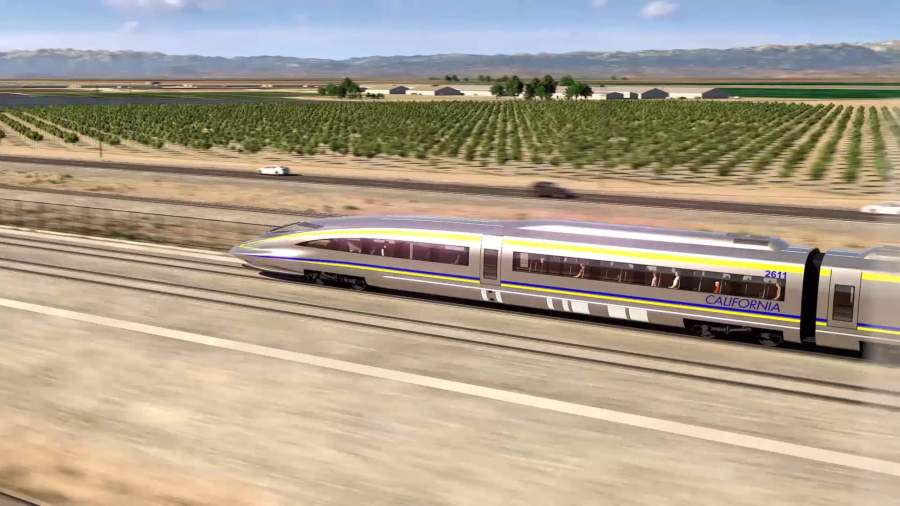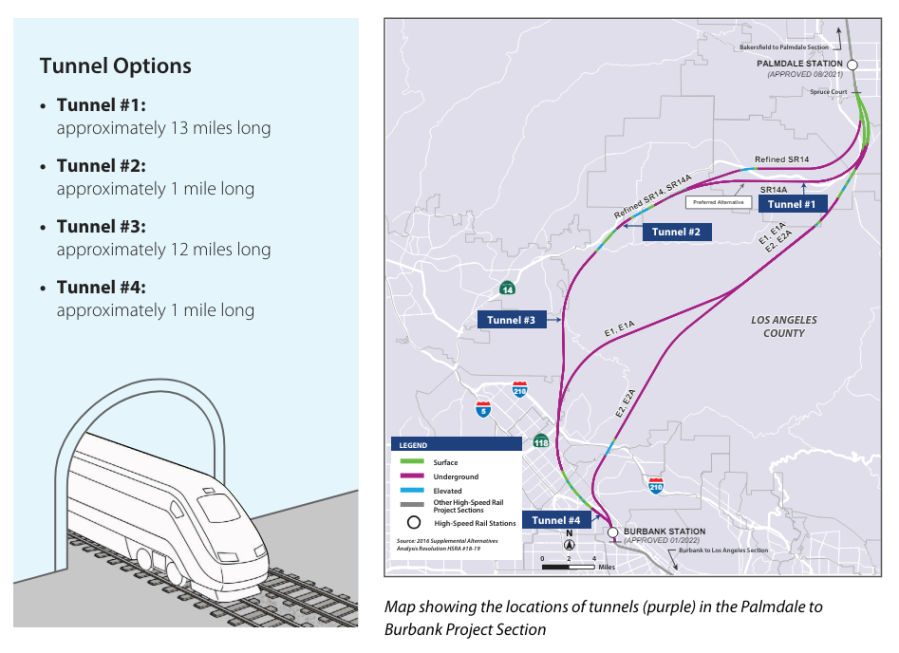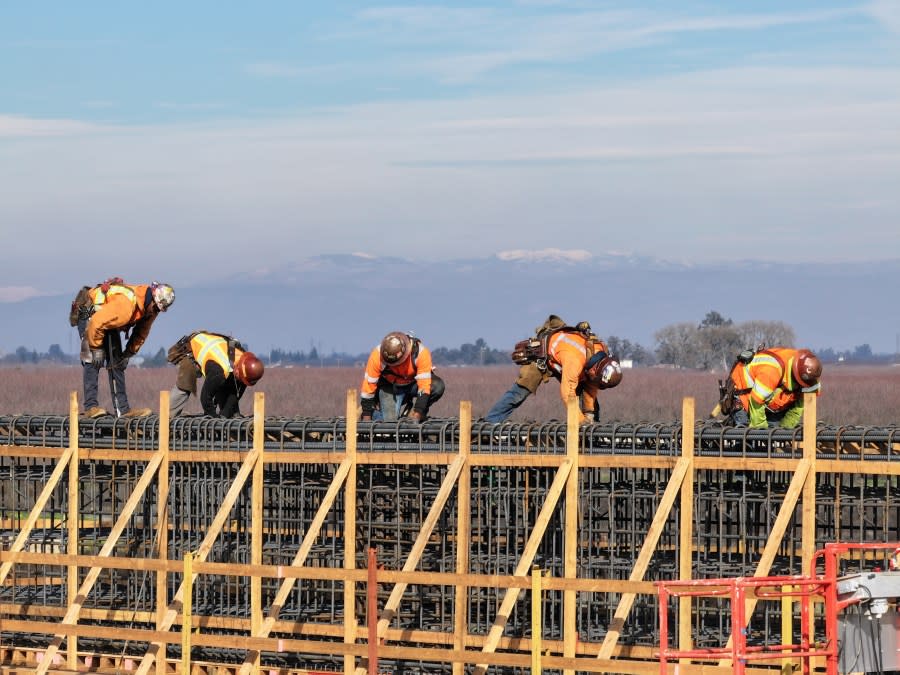Plan to connect L.A. to Bay Area by bullet train gets full environmental approval
California’s massive and ambitious project to connect downtown Los Angeles with the Bay Area via electric trains capable of reaching speeds of over 200 mph has cleared its biggest hurdle to date.
On Thursday, the California High-Speed Rail Authority received complete environmental approval between the two regions, a historic milestone in a state notorious for holding up construction projects for environmental review.
The Authority Board of Directors approved the environmental impact report and selected a route between Palmdale and Burbank, the last segment between San Francisco and L.A. that had yet to be environmentally cleared.
That portion of the proposed total system is considered to be among the most challenging to build because it requires boring out some of the longest tunnels ever constructed through some of the most mountainous terrain along the entire system.
The route approved on Thursday, which was the preferred option by the Authority, features about 30 miles of tunnels, 28 of which will travel through mountains.
The 38-mile segment will run partly along Highway 14, separated from vehicle traffic and will be used exclusively for high-speed rail.
The majority of the approved path will be underground, passing under the town of Acton, through portions of the Angeles National Forest and the San Gabriel Mountains National Monument. The tunnels are projected to limit the overall impact to local communities and nearby wetlands, a major sticking point in the effort to obtain environmental clearance.
The price tag for this portion of the project was estimated to be around $22.55 billion when the plan was originally drafted in 2018. CEO Brian Kelly said those estimates, adjusted for inflation in 2024, come in at around $28.6 billion, although an Authority spokesperson tells KTLA there is not currently an official update on costs.
2 train manufacturers vying for California bullet train contract
The Palmdale station will be located at an existing transit center on Clocktower Plaza Drive and the Burbank station will be located underground at the Hollywood Burbank Airport — which is currently undergoing massive renovations and expansion, with tentative plans to open a new terminal in 2026.
CAHSR officials say the travel time between the two stations will be around 20 minutes. Express trains that skip both stops will cover that ground even faster.
With the Palmdale-to-Burbank section officially cleared, the Authority has now obtained environmental approval for 463 of the 494-mile system that comprises “Phase 1” of CAHSR.
The last 30-some miles yet to be approved is Los Angeles to Anaheim, the southernmost portion of Phase 1. Environmental approval for that segment, which will complete the approval process for all of Phase 1, is expected by next year.
When construction will actually begin in Los Angeles County remains uncertain as current work is being focused on the “Initial Operating Segment,” which will connect Merced to Bakersfield in the Central Valley.
Construction is currently underway along 119 miles of that segment, and the Authority is working to extend the current construction zone to 171 miles. That segment is expected to be up and running by the early 2030s.
What’s the difference between California’s 2 high-speed rail projects?
In the Bay Area, the vast majority of work needed to complete the section between San Francisco and San Jose is already completed, thanks to a partnership with the Authority and Caltrain — a regional passenger rail service. The two entities will operate in that area in what’s being called a “blended system.”
If and when Phase 1 is ever completed, the Authority has previously discussed extending the system to Sacramento in the north and San Diego in the south as part of the project’s Phase 2.
If Phase 2 ever becomes a reality, the California High-Speed Rail would have a service area of more than 800 miles.
In a news release issued Thursday afternoon following the environmental approval, Kelly, who is set to retire as the Authority’s CEO later this year, called one of his final accomplishments as the leader of the agency a “major milestone”that is transformative for the state.
“It’s also transformational for Los Angeles County, connecting Palmdale to Burbank in a way that’s never been possible before,” Kelly said.
Copyright 2024 Nexstar Media, Inc. All rights reserved. This material may not be published, broadcast, rewritten, or redistributed.
For the latest news, weather, sports, and streaming video, head to KTLA.





